The seven dancers of LeeSaar The Company perform Princess Crocodile at the Baryshnikov Arts Center.
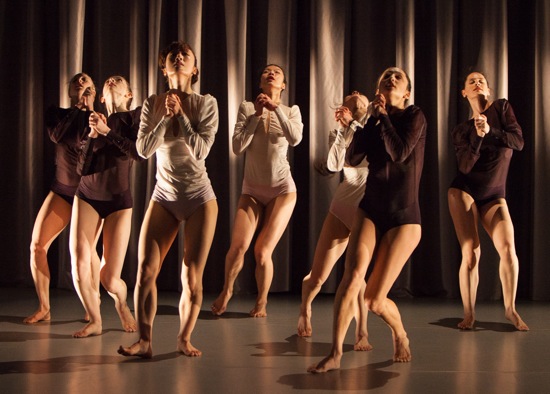
Members of LeeSaar The Comany in Princess Crocodile. (L to R): Delphina Parenti, Motrya Kozbur, Hyerin Lee, Jye-Hwei Lin, Hsin-Yi Hsiang, Isabel Umali, and Candice Schnurr. Photo: Yi-Chun Wu
Lee Scher and Saar Harari call their latest work for LeeSaar The Company Princess Crocodile, but that doesn’t mean we should expect to see a story about a crocodile who ruled the swamp or ate a princess or became one. These Israeli artists who’ve lived and worked in the U.S. for ten years now tend to condense intimations of narrative and embed them in the performers’ bodies, where dancing makes them echo things once seen and felt.
The seven extraordinary dancers in Princess Crocodile may at times have life as a princess on their minds, but they also channel their inner swamp creature. They can stride or mince about the Howard Gilman Space at the Baryshnikov Arts Center, or walk bent-over and spraddle-legged. They “gossip,” recline like beauty queens in an ad for sunblock, and show off their splits like kiddie dance-competition contestants. But they can also open their mouths very, very wide, and when, toward the end of the piece, they line up in front of the audience, stand as straight as soldiers ready for inspection, and waggle their tongues—intent on doing this as rapidly as possible—they conflate an erotic come-on with trolling for a fat insect to swallow.
Lee’s background is in acting and directing, Harari’s is in dance, and both teach Gaga, the movement system developed by Ohad Naharin, the artistic director of Israel’s Batsheva Dance Company. The combined result of their backgrounds and their shared aesthetic is an ensemble of women you can’t take your eyes off. These dancers are capable of getting parts of their anatomy traveling simultaneously along separate paths. Sometimes they look as if tiny invisible impulses beneath their skin were trying to find outlets. They can move with great force and sharpness, but they also unspool physical complexities with a smooth, seductive muscularity.
Hyerin Lee’s opening solo could be telling an entire story and providing themes for what is to follow. For much of it, she sits on the floor close to the audience in a pool of light, whose circumference Avi Yona Bueno (Bambi)’s lighting design gradually expands. Everything about Lee is exquisitely focused: the way she looks sideways and upward, beckons, laughs silently, scoops up something invisible, “drinks” from her hand, and opens her legs pointedly to show us her crotch. Her shoulders, head, arms engage in private conversation. And what are we hearing? Stravinsky’s sweet music (1947 version) for Apollo and Terpsichore’s duet in George Balanchine’s 1928 Apollo. And what is Lee dreaming or remembering? Our job is not to decipher her silent soliloquy, but in some way to let it resonate with things we know and feel.
The other dancers who appear are clad, like Lee, in stylish, long-sleeved, semi-transparent outfits by Naomi Luppescu that bare their legs and their backs. Lee, Hsin-Yi Hsiang, and Jye-Hwei Lin wear white versions; Candice Schnurr, Isabel Umali, Motrya Kozbur, and Delphina Parenti are dressed in black. The Stravinsky music has ended, and another of the ten selections that make up the score begins. Perhaps this 3HAE by the British electronic duo Autechre with The Hafler Trio. Whatever it is, it introduces such sounds as low, echoing rumbles.
These women do not touch one another. They may dance in synchrony, stop and stare at what’s happening around them, or leave the stage and return alone or in some new alliance. They move with a combination of poised elegance and awkwardness, or alternate between these. They seem to be testing what can do and what they like to do before moving on. In a short span of time, Umali circles her hips and shoulders, waddles, kicks one leg high, runs around flapping her arms, and sinks into a split before leaving the stage. She’s the second one to show a memorable split. The dancer slides her legs slowly apart until she’s almost sitting; there she pauses, as if considering whether this maneuver was a good idea; evidently it is, and she continues until her crotch touches the floor.
Strange visions abound. Lee begins shuddering; suddenly she’s enveloped in green light and walks offstage. Hsiang and Umali enter, holding something in their hands; Hsiang opens her mouth; Umali stares. While Schnurr dances in blue light to the sounds of flamenco dancing, castanets, and cante hondo (by Chano Lobato, Maria Magdalena, and Paco Romero) —paying no attention to its style or pulse—Lee, Kozbur, and Umali stand at the back of the stage puffing on imaginary cigarettes like schoolgirls behind the building. Then they gossip silently, but one of them (Lee as I remember), says out loud, “What a day!” To the frail soprano of Josephine Foster singing The Garden of Earthly Delights, Hsiang enters with her hair unbraided and whips it around, as well as launching herself into a single, high leap, and tossing off an entrechat, along with other less fancy but equally demanding steps.
For some reason, while writing this article, I thought back to the Oz books I read when I was growing up. Little Dorothy had a destination when she traveled, but she and her companions encountered various populations with specialized bodies—visiting towns in which everyone had wheels for arms or ones whose inhabitants were put together like jigsaw puzzles and had to keep track of their parts.
The eclecticism of the music for Princess Crocodile (an extract from Gustav Mahler’s Fifth Symphony is followed by Animal Hospital’s “Good Time”) and the constant, sensuous complexity with which the dancers mold and undulate and knot their bodies make the piece feel like a journey with no compelling destination in mind. It’s not shaped by developments, climaxes, and conclusions. The amazing movements jolt along one trail, hit a slippery patch, pause, draw back, take a seductive rest. But these are all part of the same terrain: women exploring their nature and its changing seasons. The movement champions of LeeSaar are like no woman anyone sits down to dinner with or talks to or takes to bed, but their huge spasms and tiny nuanced adjustments quiver under your skin.

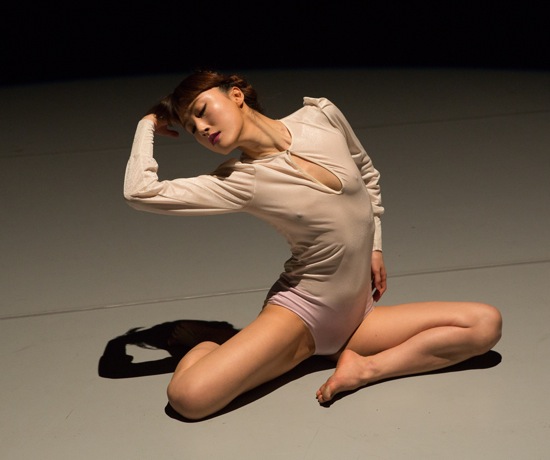
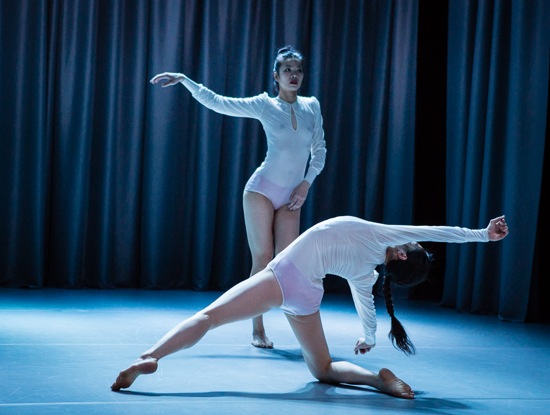
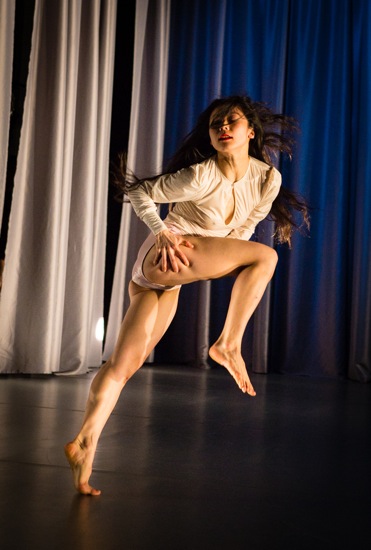
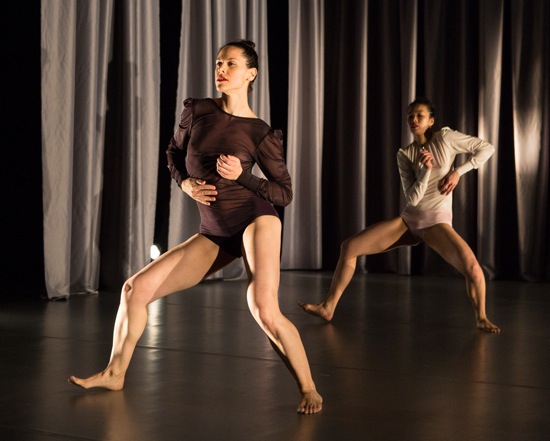
Since you’re so specific on details of Stravinsky’s Apollo, let me note that the ballet wasn’t originally intended for Balanchine but commissioned by Elizabeth Sprague Coolidge for a modern music festival the Library of Congress and first choreographed by Adolph Bolm, who danced Apollo with Ruth Page as Terpsichore. Balanchine’s version was finally seen in Paris about six weeks later. Because of the limited space in the Coolidge Auditorium, which was conceived for chamber music, Stravinsky chose to use only strings, just as Copland originally scored Appalachian Spring for only 13 instruments in 1944 when Graham premiered it there, and the number of dancers also had to be limited in both works..
Influencias flamencas?